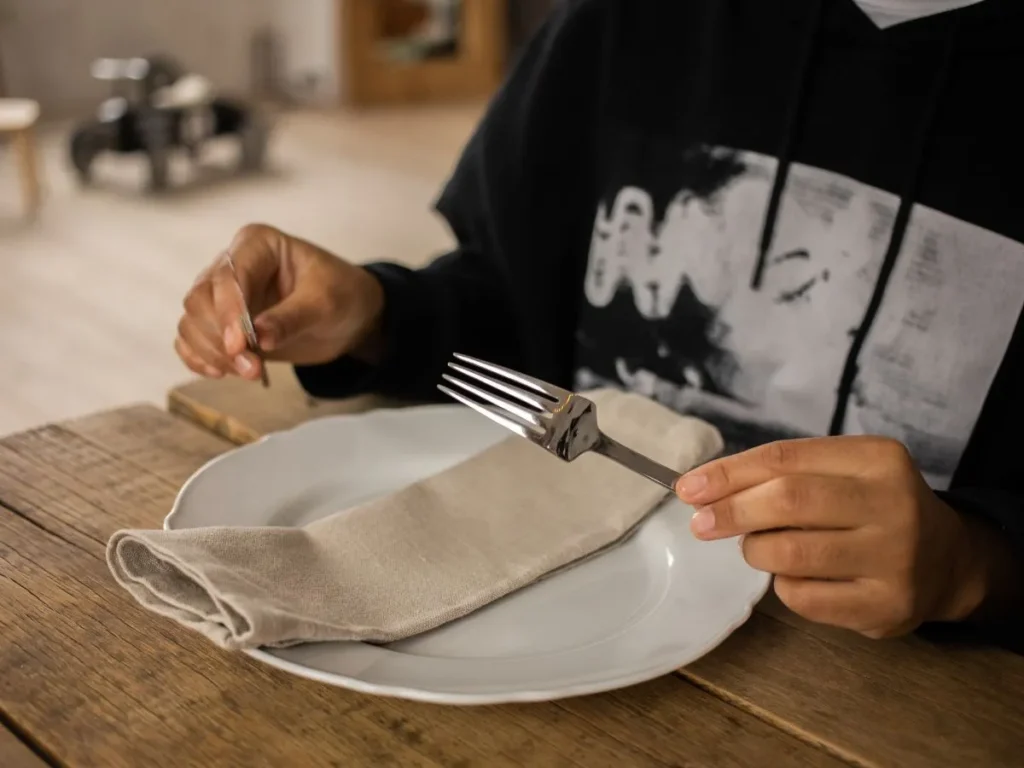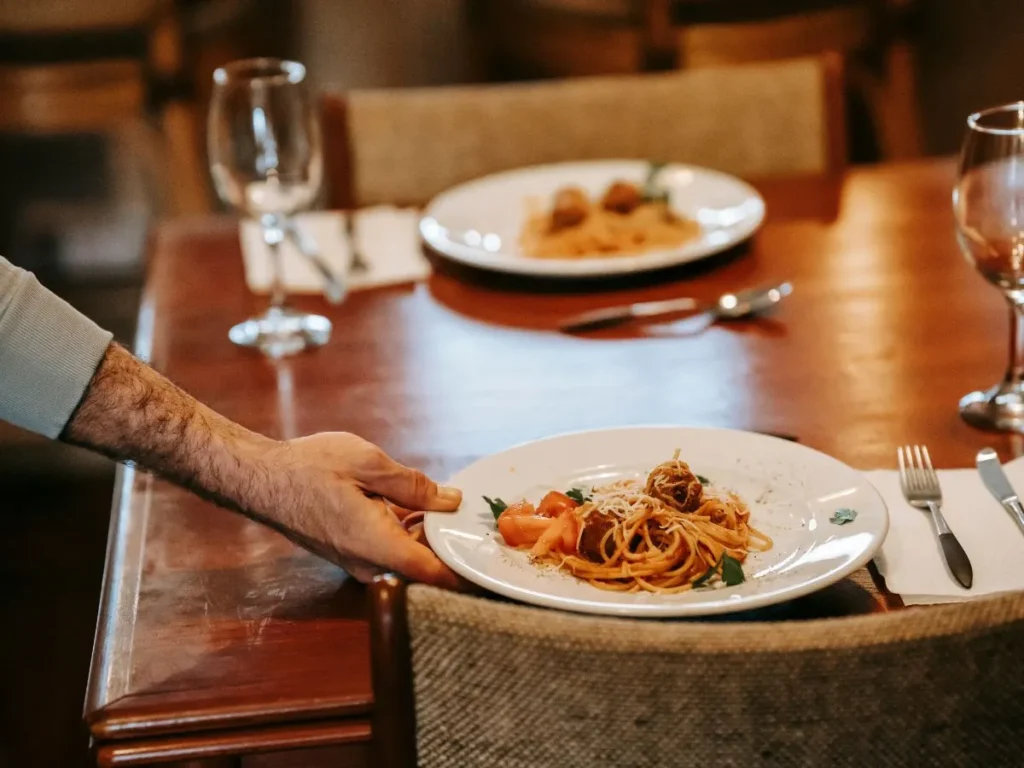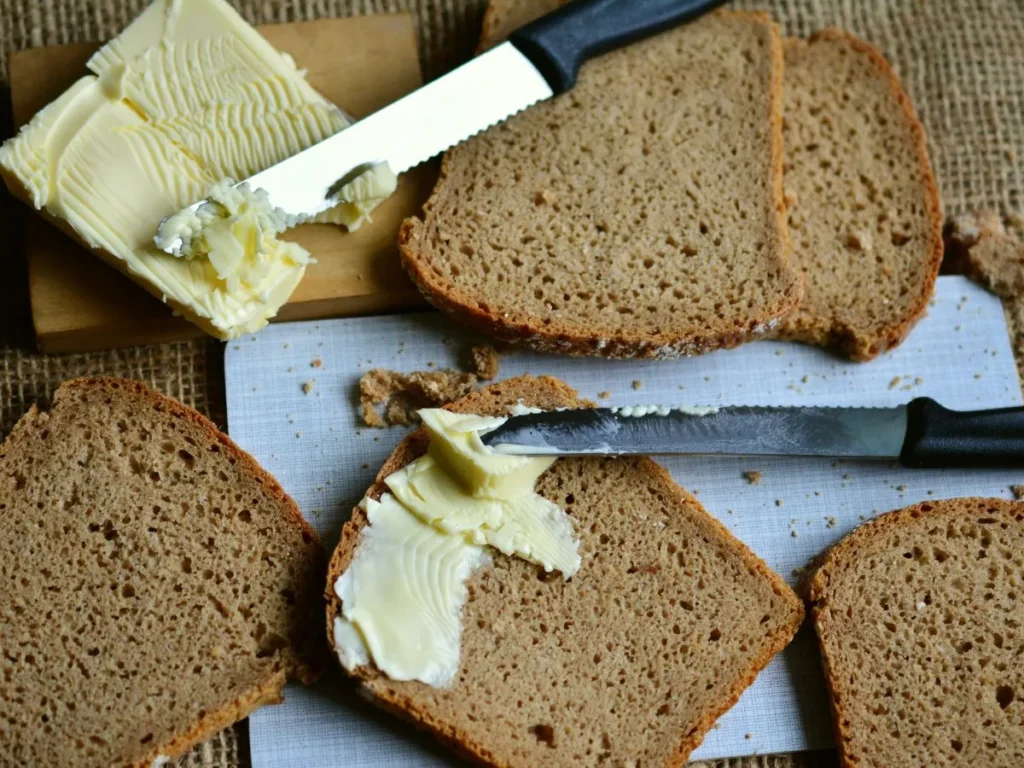Table manners play a pivotal role in shaping our dining experiences, transcending mere etiquettes to become integral components of our daily lives. The importance of table manners cannot be overstated, as they not only contribute to the refinement of social interactions but also significantly impact our health and well-being. In today’s fast-paced world, where meals are often rushed or consumed on the go, the significance of cultivating proper table manners has become increasingly pertinent. By adhering to the principles of etiquette at the dining table, individuals can foster a sense of respect, decorum, and civility in their interactions with others.
Understanding the importance of table manners goes beyond merely following a set of rules; it embodies a deeper appreciation for the communal aspect of dining and the rituals associated with it. Whether it’s a formal dinner party, a casual gathering with friends, or a family meal at home, practicing good table manners contributes to creating an atmosphere of harmony and mutual respect. Moreover, it reflects one’s upbringing, cultural background, and values, serving as a testament to one’s character and integrity.
Influence of Table Manners on Improving Health and Social Interactions
By examining various aspects of dining etiquette and behavior, we aim to elucidate the importance of cultivating and practicing good table manners in today’s society. From the physiological benefits of mindful eating habits to the enhancement of interpersonal relationships through respectful behavior, the influence of table manners extends far beyond the confines of the dining table. Through a comprehensive exploration of this topic, we seek to provide readers with insights and practical tips to integrate the importance of table manners into their daily lives, thereby enriching their overall well-being and social interactions.

Impact of Table Manners on Health:
Importance of Mindful Eating Habits:
Mindful eating habits form the cornerstone of proper table manners and have a profound impact on health. When individuals practice mindfulness during meals, they become more attuned to their body’s signals of hunger and satiety. By paying close attention to the sensory experience of food—its taste, texture, and aroma—they can savor each bite and derive greater satisfaction from their meals.
This mindful approach to eating promotes healthier food choices and portion control, ultimately leading to improved nutrition and overall well-being. The importance of table manners lies in their ability to cultivate mindfulness and foster a deeper connection with food and one’s body.
Avoiding Overeating and Promoting Digestion:
One big benefit of good table manners is that it keeps you from eating too much, which can cause multiple of health problems. By eating slowly and mindfully, individuals give their bodies time to register feelings of fullness, reducing the likelihood of consuming excess calories. Furthermore, chewing food thoroughly aids in digestion by breaking down food particles more effectively, allowing for better nutrient absorption.
Proper table manners promote moderation and portion control, helping individuals maintain a healthy weight and lower their chance of getting diseases like diabetes and heart disease that are linked to being overweight. Thus, the importance of table manners extends beyond social etiquette to encompass the promotion of digestive health and overall wellness.
Reducing the Risk of Digestive Issues and Discomfort:
Adhering to proper table manners can significantly reduce the risk of digestive issues and discomfort. Too much food or too quickly eaten can be too much for the digestive system to handle., leading to symptoms such as indigestion, bloating, and heartburn. By practicing moderation and mindful consumption, individuals can support optimal digestive function and prevent discomfort.
Additionally, avoiding common pitfalls like talking with food in the mouth or eating while distracted can help prevent digestive issues by promoting proper chewing and digestion. Thus, the importance of table manners lies in their ability to maintain digestive health and ensure a comfortable dining experience.
Psychological Impact on Overall Well-being:
In addition to their physical benefits, proper table manners have a profound psychological impact on overall well-being. When individuals practice mindfulness and self-discipline at the dining table, they cultivate a sense of control and satisfaction that extends beyond mealtime. By demonstrating respect for themselves and others through their behavior, they foster positive emotions and strengthen their mental health.
Sharing food with others respectfully and peacefully can also help people make new friends and feel like they are part of a community. Thus, the importance of table manners extends beyond the individual to encompass broader aspects of psychological well-being and social cohesion.

Fundamentals of Teaching Table Manners
Proper table manners are essential skills that contribute to the refinement of social interactions and promote a sense of respect and decorum. Teaching table manners to children from a young age lays the foundation for lifelong habits that enhance their relationships and well-being. By instilling these values early on, parents and guardians play a crucial role in shaping children’s behavior and attitudes toward dining etiquette.
Importance of Teaching Children Table Manners
The importance of table manners cannot be overstated, especially when it comes to teaching them to children. Starting early allows parents and guardians to instill good habits and values from a young age, setting the stage for a lifetime of respectful and mindful dining experiences. Teaching children table manners not only prepares them for social interactions but also fosters a sense of self-discipline and respect for others. By introducing basic etiquette principles in a supportive and nurturing environment, parents can empower their children to navigate various social settings with confidence and grace.
Role of Parents and Guardians
Parents and guardians serve as role models for their children, and their behavior at the dining table sets the tone for acceptable etiquette practices. Leading by example is crucial when teaching table manners, as children often mimic the actions and attitudes of their caregivers.
By demonstrating proper dining etiquette—such as using utensils correctly, sitting up straight, and engaging in polite conversation—parents can reinforce the importance of table manners in a tangible and relatable way. Consistently modeling respectful behavior teaches children valuable lessons about courtesy, consideration, and empathy, which are essential for healthy social interactions.
Incorporating Fun and Interactive Learning Methods
Learning table manners does not have to be dull or intimidating; incorporating fun and interactive learning methods can make the experience enjoyable for children. Parents and guardians can use games, role-playing activities, and storytelling to teach etiquette principles in a lighthearted and engaging manner.
By making learning about table manners a positive and memorable experience, children are more likely to retain the information and apply it in real-life situations. Encouraging children to participate actively in mealtime rituals and discussions fosters a sense of ownership and responsibility for their behavior, reinforcing the importance of table manners in a meaningful way.
Consistency and Reinforcement of Good Behavior
Consistency is key when teaching table manners, as children thrive on routine and clear expectations. Parents and guardians should establish consistent rules and boundaries around mealtime behavior, emphasizing the importance of respect, courtesy, and gratitude. Positive reinforcement techniques, such as praise, encouragement, and rewards, can motivate children to exhibit good manners consistently.
Additionally, gentle reminders and constructive feedback help children understand the consequences of their actions and learn from their mistakes. By providing a supportive and nurturing environment for learning, parents and guardians can instill lifelong values of respect and consideration in their children, reinforcing the importance of table manners in their daily lives.

Avoid Grossing Out the Entire Table
Maintaining proper table manners is not only about adhering to social norms but also about showing respect for fellow diners and creating a pleasant dining atmosphere. Nobody wants to be grossed out during a meal, and practicing good etiquette can ensure that everyone at the table feels comfortable and respected. From chewing with your mouth closed to using napkins and avoiding loud chewing noises, several key practices contribute to a positive dining experience.
Importance of Proper Chewing and Avoiding Talking with Food in Mouth
One of the fundamental aspects of good table manners is chewing with your mouth closed and refraining from talking with food in your mouth. Not only is it unsightly and unappetizing for others to see food being chewed, but it can also lead to discomfort and embarrassment for both the diner and those around them. Proper chewing etiquette demonstrates respect for the dining experience and allows everyone at the table to focus on enjoying their meal without distractions. By emphasizing the importance of proper chewing habits, individuals can contribute to a more pleasant and harmonious dining environment.
Basic Hygiene Practices: Using Napkins and Avoiding Loud Chewing Noises
In addition to proper chewing etiquette, basic hygiene practices such as using napkins and avoiding loud chewing noises are essential for maintaining a pleasant dining atmosphere. Using a napkin to dab or wipe one’s mouth after eating helps to prevent food particles from being left on the face or hands, reducing the risk of discomfort or embarrassment.
Similarly, avoiding loud chewing noises—such as slurping or smacking—demonstrates consideration for others and helps to preserve the tranquility of the dining experience. By incorporating these basic hygiene practices into their dining routine, individuals can contribute to a more enjoyable and civilized mealtime experience.
Respect for Fellow Diners and Maintaining a Pleasant Dining Atmosphere
Ultimately, practicing good table manners is about showing respect for fellow diners and maintaining a pleasant dining atmosphere. Whether dining with family, friends, or colleagues, it is important to be mindful of how one’s behavior may affect others around the table.
This includes being considerate of personal space, refraining from offensive or disruptive behavior, and making an effort to engage in polite and respectful conversation. By fostering a sense of mutual respect and courtesy, individuals can create an environment where everyone feels valued and appreciated, enhancing the overall dining experience for all involved.

Don’t Salt Your Food Before Tasting It
Proper seasoning is an art form that can elevate the flavors of a dish and enhance the dining experience. However, one of the cardinal rules of good table manners is to refrain from salting your food before you taste it. By understanding flavor profiles, adjusting seasoning to personal taste preferences, and trying food before seasoning, individuals can avoid over-salting and ensure a more enjoyable meal.
Understanding Flavor Profiles and Seasoning Appropriately:
Understanding the flavor profiles of different ingredients is essential for seasoning food appropriately. Each ingredient contributes its own unique taste and aroma to a dish, and knowing how to balance these flavors is key to achieving a harmonious and well-rounded taste. For example, acidic ingredients like lemon or vinegar can help to brighten and enhance the flavors of a dish, while salty ingredients like soy sauce or cheese can add depth and complexity. By understanding how these flavors interact with one another, individuals can season their food more effectively and create dishes that are both flavorful and balanced.
Adjusting Seasoning to Personal Taste Preferences:
One of the joys of cooking and dining is the creativity to customize dishes to suit personal taste preferences. Whether you prefer your food to be spicy, savory, or sweet, adjusting seasoning to reflect your individual palate is an important aspect of good table manners. By tasting food before seasoning, individuals can gauge the level of saltiness and adjust accordingly to suit their preferences. This not only allows for a more enjoyable dining experience but also demonstrates respect for one’s own taste preferences and culinary choices.
Importance of Trying Food Before Seasoning to Avoid Over-Salting:
One of the main reasons to avoid salting your food before you taste it is to prevent over-salting. Adding salt to food without first tasting it can lead to a dish that is excessively salty and unpleasant to eat. By trying food before seasoning, individuals can assess the flavor profile and saltiness of a dish and make adjustments as needed. This not only ensures a more balanced and flavorful meal but also prevents unnecessary waste of ingredients. Additionally, by practicing this aspect of good table manners, individuals demonstrate respect for the culinary craft and the effort that goes into preparing a delicious meal.

It Can Be Important How You Hold Your Utensils
Proper table manners extend beyond just what is eaten to how it is eaten. The way you hold your utensils can significantly impact the dining experience, demonstrating practicality, etiquette, and cultural awareness. Understanding the importance of table manners when it comes to holding utensils involves considering practicality and efficiency in eating, mastering the proper grip for different utensils, and respecting cultural variations in utensil usage and etiquette.
Practicality and Efficiency in Eating:
The importance of table manners in holding utensils lies in their ability to facilitate practicality and efficiency in eating. Using utensils correctly allows individuals to navigate their meals with ease, minimizing spills and messes while maximizing enjoyment.
For example, holding a fork with the tines facing downwards and using a gentle stabbing motion enables efficient and precise picking up of food. Similarly, holding a knife with a firm grip and using a sawing motion ensures clean and precise cutting of meat and other foods. By mastering these basic techniques, individuals can enhance their dining experience and demonstrate respect for the culinary craft.
Proper Grip for Different Utensils: Fork, Knife, and Spoon:
Another aspect of the importance of table manners in holding utensils is mastering the proper grip for different types of utensils. Each utensil serves a specific purpose and requires a different grip to be used effectively. For example, holding a fork with the index finger and thumb while resting it against the middle finger allows for greater control and precision when picking up food.
Similarly, holding a knife with the index finger extended along the spine of the blade and the thumb resting on the side of the blade provides stability and control during cutting. Mastering these proper grips not only enhances the dining experience but also demonstrates respect for the culinary traditions and customs associated with different utensils.
Cultural Variations in Utensil Usage and Etiquette:
It is essential to recognize that table manners and utensil usage can vary significantly across different cultures and regions. What may be considered proper etiquette in one culture may be perceived differently in another. For example, in Western cultures, it is customary to hold the fork in the left hand and the knife in the right hand while cutting food. In contrast, in Eastern cultures such as Japan, it is common to use chopsticks for eating and to hold them in a specific manner. By respecting these cultural variations in utensil usage and etiquette, individuals demonstrate awareness and appreciation for diverse culinary traditions and customs.
Where should hands rest when not using utensils?
When not using utensils during a meal, proper etiquette dictates that your hands should rest in your lap. Placing your hands in your lap is polite and respectful, as it keeps them out of sight and prevents them from being placed on the table where they could come into contact with food or utensils. This practice also helps to maintain a neat and tidy appearance during the meal. If you need to gesture or use your hands for any reason, it’s best to do so subtly and briefly, returning them to your lap when not in use. Overall, keeping your hands in your lap when not using utensils is a simple yet important aspect of proper table manners.

Sometimes, the Placement of Your Utensils Really Does Send a Message
The placement of utensils on the dining table is not merely a matter of practicality; it also serves as a form of non-verbal communication, conveying important messages about meal progression, etiquette, and cultural norms. Understanding the significance of utensil placement, indicating meal progression through utensil positioning, and communicating non-verbally through table setting are all key aspects of proper table manners that contribute to a more enjoyable and respectful dining experience.
Understanding the Significance of Utensil Placement:
The importance of table manners becomes apparent when considering the significance of utensil placement. The arrangement of utensils on the dining table communicates important information about the meal to come, including the number of courses, the order of service, and the level of formality. For example, a formal place setting may include a variety of utensils arranged in a specific order.
In contrast, a casual setting may feature fewer utensils arranged in a more relaxed manner. By understanding the significance of utensil placement, individuals can navigate the dining experience with confidence and grace, demonstrating respect for the culinary traditions and customs associated with different meal settings.
Indicating Meal Progression through Utensil Positioning:
The placement of utensils on the dining table can also indicate the progression of the meal, helping diners anticipate what is to come and pace themselves accordingly. In a multi-course meal, utensils are typically arranged in the order of service, with those for the first course placed on the outer edges of the place setting and those for subsequent courses placed closer to the plate. By paying attention to the positioning of utensils, diners can follow the flow of the meal and adjust their dining etiquette accordingly, ensuring a seamless and enjoyable dining experience for all involved.
Communicating Non-verbally through Table Setting:
Beyond practical considerations, the arrangement of utensils on the dining table communicates non-verbally with fellow diners, conveying messages of respect, hospitality, and cultural identity. For example, in some cultures, the placement of utensils may hold symbolic significance, such as indicating social status or religious beliefs. By paying attention to these subtle cues, individuals can demonstrate awareness and appreciation for cultural diversity and foster a sense of inclusivity and respect at the dining table.
How Are Utensils Placed on the Table?
Utensils are typically placed on the dining table in a specific order and arrangement, reflecting the traditional conventions of table setting. In a formal place setting, utensils are arranged according to the order of service, with those for the first course placed on the outer edges of the place setting and those for subsequent courses arranged closer to the plate. Each utensil is positioned in relation to the plate and other tableware, with forks placed to the left of the plate, knives and spoons to the right, and dessert utensils above the plate or brought out with the dessert course.
Which Utensils Should Be Used First During a Multi-Course Meal?
During a multi-course meal, utensils should be used in the order of service, starting with those placed on the outer edges of the place setting and progressing inward with each course. For example, the outermost fork is typically used for the first course, such as a salad or appetizer, while the innermost fork is reserved for the main course. Similarly, knives and spoons are used in the order of service, with those placed closest to the plate used for the corresponding courses. By following this protocol, diners can navigate the meal with confidence and demonstrate respect for proper table manners and etiquette.

What About Drinking Glasses and Toasting Etiquette?
In the realm of table manners, proper handling of drinking glasses and observing toasting etiquette are essential elements that contribute to the overall dining experience. From understanding the importance of table manners in handling drinking glasses to mastering the art of making toasts with grace and respect for cultural and social norms, these practices play a significant role in fostering a harmonious and enjoyable dining atmosphere.
Proper Handling of Drinking Glasses:
The importance of table manners extends to the proper handling of drinking glasses, which can enhance the dining experience and demonstrate respect for the beverage being served. When handling drinking glasses, it is essential to hold them by the stem or base rather than the bowl to avoid leaving fingerprints or warming the contents with body heat. Additionally, glasses should be lifted and set down gently to avoid clinking or spilling, which can disrupt the ambiance of the meal. By mastering the art of handling drinking glasses with care and attention to detail, individuals can contribute to a more refined and enjoyable dining experience for themselves and their fellow diners.
Toasting Etiquette: When, Why, and How to Make a Toast:
Toasting is a time-honored tradition that adds a special touch to any dining occasion, from formal dinners to casual gatherings with friends. Understanding the importance of table manners in toasting etiquette involves knowing when, why, and how to make a toast with grace and sincerity. Toasts are typically made to celebrate a special occasion, express gratitude, or honor someone’s achievements, and are often accompanied by raising a glass and making a heartfelt speech.
When making a toast, it is important to maintain eye contact with the person being toasted and to speak clearly and confidently. Additionally, it is customary to clink glasses gently and take a sip of the beverage before setting the glass back down. By observing toasting etiquette with poise and respect, individuals can add an extra layer of warmth and camaraderie to the dining experience.
Respecting Cultural and Social Norms During Toasting Ceremonies:
In addition to understanding the basics of toasting etiquette, it is important to respect cultural and social norms when participating in toasting ceremonies. Different cultures may have their own customs and traditions surrounding toasting, such as the order in which to make toasts, the appropriate beverages to use, and the gestures or phrases used to accompany the toast. By familiarizing themselves with these customs and adapting their behavior accordingly, individuals can demonstrate respect for cultural diversity and ensure that everyone feels included and valued during the toasting ceremony.

What Is the Proper Way to Pass Bread and Butter at the Table?
When it comes to table manners, the proper way to pass bread and butter at the table is to offer them to the person on your left first, followed by the person on your right. This practice ensures that everyone at the table has an opportunity to partake in the bread and butter before it is passed to the next person. When passing bread, it is customary to use a serving utensil such as a bread knife or bread tongs to avoid touching the food with your hands.
Additionally, butter should be served in a communal dish or individual butter dishes, with a separate butter knife provided for spreading. By following these guidelines, individuals can demonstrate consideration and respect for their fellow diners and contribute to a more harmonious and enjoyable dining experience.
How Should Bread and Butter Be Served?
Bread and butter should be served in a manner that is both realistic and aesthetically pleasing, enhancing the overall dining experience. Bread can be presented in a basket or on a bread plate, with individual slices or rolls arranged neatly for easy serving. Butter should be served in a communal dish or individual butter dishes, with a separate butter knife provided for spreading.
Additionally, garnishes such as fresh herbs or flavored butter can add visual interest and flavor to the presentation. By taking care to serve bread and butter in an appealing and considerate manner, hosts can create an embracing and inviting atmosphere for their guests and ensure that everyone feels comfortable and well-cared for at the table.
Don’t Be a Snob:
One of the cardinal rules of good table manners is to avoid being a snob. This means refraining from judgmental behavior towards others’ dining habits, embracing diversity in dining practices, and fostering inclusivity and respect in social settings. The importance of table manners extends beyond mere etiquette; it is about creating an atmosphere of acceptance, appreciation, and camaraderie at the dining table.
Avoiding Judgmental Behavior Towards Others’ Dining Habits:
One of the key aspects of good table manners is showing respect for others’ dining preferences and choices. This means refraining from making negative comments or judgments about what others choose to eat, how they eat it, or their dining etiquette. Whether someone prefers their steak well-done or rare, uses a different eating utensil technique, or has dietary restrictions, it is essential to respect their choices and refrain from making them feel judged or uncomfortable. By avoiding judgmental behavior towards others’ dining habits, individuals demonstrate empathy, tolerance, and consideration, contributing to a more harmonious and enjoyable dining experience for all.
Embracing Diversity in Dining Practices:
The importance of table manners lies in their ability to foster inclusivity and celebrate diversity in dining practices. Different cultures and regions have their own unique culinary traditions, customs, and etiquette norms. Embracing this diversity enriches the dining experience, allowing individuals to learn from one another, broaden their culinary horizons, and cultivate a deeper appreciation for cultural differences. Whether it’s sharing a communal meal with friends from different backgrounds or trying new dishes at a multicultural restaurant, embracing diversity in dining practices enhances social connections and promotes a spirit of openness and acceptance.
Fostering Inclusivity and Respect in Social Settings:
At its core, good table manners are about creating an atmosphere of inclusivity and respect in social settings. This means making everyone feel welcome and valued, regardless of their background, dietary preferences, or dining habits. Whether dining with family, friends, or colleagues, it is essential to foster a sense of camaraderie and mutual respect at the table. This includes engaging in polite and respectful conversation, actively listening to others’ perspectives, and refraining from divisive or insensitive topics. By fostering inclusivity and respect in social settings, individuals contribute to a positive and enriching dining experience for everyone involved, creating lasting memories and meaningful connections.

Importance of Table Manners:
- Enhancing Social Interactions: Proper table manners contribute to creating a positive and respectful atmosphere during meals, fostering better communication and relationships.
- Promoting Health: Mindful eating habits and proper etiquette at the table can lead to healthier eating habits, aiding in digestion and preventing overeating.
- Respecting Cultural Norms: Observing table manners shows respect for cultural traditions and customs, promoting inclusivity and understanding.
- Demonstrating Politeness: Good table manners demonstrate politeness, consideration, and respect for others, making dining experiences more enjoyable for everyone.
- Creating Positive Impressions: Practicing good table manners reflects positively on an individual’s character and upbringing, leaving a lasting impression on others.
- Fostering Professional Relationships: In business settings, proper table manners can help build rapport and establish credibility, leading to successful interactions.
- Preserving Tradition: Upholding traditional etiquette practices ensures that cultural heritage and societal norms are passed down to future generations, preserving important aspects of social decorum.
Key Table Manners Tips
- Mindful Eating: Pay attention to the sensory experience of food and eat slowly to promote digestion and enjoyment.
- Proper Utensil Usage: Learn how to hold utensils correctly and appropriately use them for each dish.
- Avoid Over-salting: Taste food before adding salt and season it according to personal preference.
- Respectful Toasting: Understand when and how to make toasts and respect cultural norms surrounding toasting etiquette.
- Non-judgmental Behavior: Refrain from making negative comments or judgments about others’ dining habits.
- Embrace Diversity: Appreciate and respect different cultural dining practices and traditions.
- Create an Inclusive Atmosphere: Foster a welcoming and respectful environment at the dining table, making everyone feel valued and comfortable.
Incorporating these table manners tips into your daily life can greatly enhance your dining experiences and contribute to a more harmonious and enjoyable atmosphere. By practicing mindfulness, respect, and consideration at the table, you not only promote your own well-being but also contribute to positive interactions and relationships with those around you. Start by making small changes and gradually incorporate these tips into your dining routine. Your efforts will not only be noticed but also appreciated by others.

Benefits of Practicing Good Table Manners:
Remember that practicing good table manners is not just about following rules; it’s about demonstrating respect, consideration, and civility in your interactions with others. By upholding these values, you create a more pleasant and respectful dining environment for everyone involved. Whether at home, in a restaurant, or in a professional setting, the benefits of practicing good table manners extend far beyond the dining table, enriching your relationships and enhancing your overall well-being. So, accept these tips and make them a part of your daily dining experience.
Also Read: Mastering Table Manners for Job Interview
Conclusion
In conclusion, the importance of table manners cannot be overstated in fostering positive social interactions and promoting a respectful dining environment. By adhering to proper etiquette at the table, individuals demonstrate consideration, politeness, and respect for others, enhancing the overall dining experience. Good table manners contribute to a sense of harmony and civility, creating a welcoming atmosphere where everyone feels valued and comfortable.
Moreover, the importance of table manners extends beyond mere etiquette; it encompasses aspects of health, cultural awareness, and professional relationships. Practicing mindful eating habits and respecting cultural dining traditions not only promotes physical well-being but also fosters inclusivity and understanding among diverse groups. Additionally, in professional settings, proper table manners can leave a lasting impression, leading to successful interactions and opportunities for collaboration.
In essence, by recognizing and embracing the importance of table manners, individuals can cultivate meaningful connections, preserve cultural heritage, and promote mutual respect in social settings. Let us all strive to uphold these values and make every dining experience a memorable and enjoyable one.
